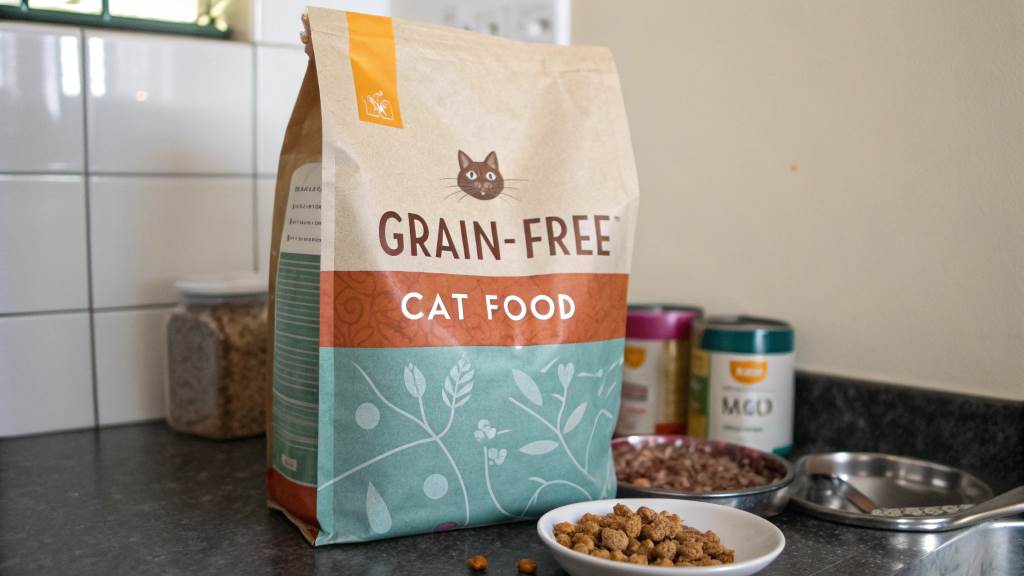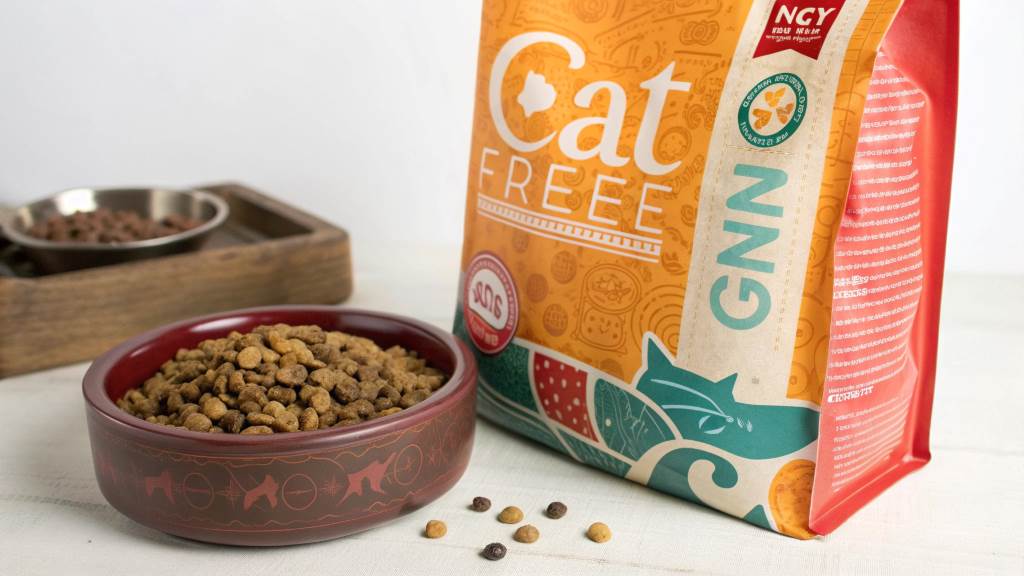The pet food industry has seen a surge in grain-free diets, with many cat owners believing it’s a healthier option. But is grain-free cat food truly better for your feline? Some experts argue that cats don’t need grains, while others caution against eliminating them entirely. Understanding the pros and cons of grain-free diets can help you make the best choice for your cat’s health.
In this guide, we’ll explore the science behind grain-free cat food, debunk common myths, and provide expert insights on whether it’s the right choice for your pet. If you’re passionate about feline nutrition, you can also explore Hot Buzzs for more expert insights on pet care.
What Is Grain-Free Cat Food?
Grain-free cat food is formulated without common grains like wheat, corn, rice, barley, or oats. Instead, it relies on alternative carbohydrate sources such as:
- Potatoes
- Peas and lentils
- Sweet potatoes
- Chickpeas
While some grain-free formulas emphasize high-protein content, others replace grains with plant-based fillers, raising concerns about nutritional balance. Understanding what’s in your cat’s food is key to making the best choice.
The Myth: Are Grains Bad for Cats?
One of the biggest misconceptions about feline nutrition is that grains are harmful to cats. However, scientific evidence suggests otherwise. Explore How to Read a Cat Food Label for Optimal Nutrition.
Cats Are Obligate Carnivores, But…
Cats require a meat-based diet, but that doesn’t mean grains are harmful. While their digestive systems prioritize protein and fat, they can process small amounts of carbohydrates.
- Wild cats consume some carbohydrates from the stomach contents of prey.
- Studies show that cats can digest and metabolize grains efficiently when included in moderation.
Grains Are Not the Leading Cause of Food Allergies
Many cat owners switch to grain-free diets believing their cat has a grain allergy. However, true grain allergies in cats are rare.
- Studies show that beef, dairy, and fish are more common allergens than grains.
- Less than 1% of cats are allergic to grains.
If your cat experiences digestive issues, consult a vet before eliminating grains from their diet.
Grain-Free Doesn’t Always Mean Low-Carb
Many grain-free cat foods replace grains with starchy vegetables like potatoes and peas, which can lead to higher carbohydrate content than grain-inclusive foods.
- High carbohydrate intake in cats may contribute to obesity and diabetes.
- Some grain-free formulas contain up to 40% carbohydrates, exceeding a cat’s natural dietary needs.
Grain-free doesn’t automatically mean healthier, making it essential to check the ingredient list.
Do Cats Eat Strawberries? Understanding Feline Dietary Preferences
While discussing alternative ingredients, some cat owners wonder do cats eat strawberries and whether fruits are beneficial for them. While strawberries are non-toxic to cats, they provide little nutritional value. Cats lack taste receptors for sweetness and primarily thrive on animal proteins.
If you offer strawberries, do so in moderation, ensuring they are washed and cut into small pieces. However, always prioritize a meat-based diet for your feline friend. If you’re curious about feline-safe fruits, check out https://hotbuzzs.com/pet-care/can-cats-eat-strawberries/ this guide on cat-friendly snacks.
Potential Benefits of Grain-Free Cat Food
While grain-free diets may not be necessary for all cats, they do offer certain benefits.
- Higher Protein Content
- Many grain-free formulas prioritize meat, making them more protein-rich.
- High-protein diets support muscle health, energy levels, and overall vitality.
- Fewer Fillers and Artificial Additives
- Quality grain-free foods focus on whole, natural ingredients.
- Avoiding artificial preservatives and by-products can improve digestion and coat health.
- Ideal for Cats with Grain Sensitivities
- If a vet confirms a grain intolerance, grain-free food may help.
- Symptoms of grain intolerance include chronic diarrhea, vomiting, and skin irritation.
- May Reduce Inflammation in Some Cats
- Some pet owners report reduced joint inflammation and better coat quality with grain-free diets.
- This could be due to the elimination of certain processed grains, but more research is needed.
Potential Risks of Grain-Free Cat Food
Not all grain-free diets are created equal. Here are some key concerns:
- Higher Carbohydrate Content
- Some grain-free brands replace grains with starchy fillers.
- Diets high in peas, lentils, and potatoes can lead to weight gain and diabetes.
- Link to Heart Disease (Dilated Cardiomyopathy – DCM)
- The FDA has investigated a possible link between grain-free diets and dilated cardiomyopathy (DCM) in cats and dogs.
- Diets rich in legumes and potatoes may interfere with taurine absorption, an essential amino acid for heart health.
- Cats require taurine from animal protein, and grain-free foods with excessive plant ingredients could put them at risk.
- More Expensive Without Added Nutritional Value
- Grain-free cat food tends to cost more than grain-inclusive brands.
- If your cat has no grain intolerance, switching may not provide additional health benefits.
- Digestive Issues in Some Cats
- Some grain-free foods contain too much fiber from legumes, leading to gas, bloating, and loose stools.
- Cats with sensitive stomachs may struggle to digest certain plant-based ingredients.
How to Choose the Best Cat Food: Grain-Free vs. Grain-Inclusive
When selecting a cat food, focus on quality ingredients rather than marketing claims.
- Prioritize High-Quality Animal Protein
- Look for foods where real meat (chicken, turkey, fish, or beef) is the first ingredient.
- Avoid foods where plant proteins like pea protein appear before meat.
- Check the Carbohydrate Content
- Cats require less than 10% carbohydrates in their diet.
- Some grain-free foods contain more than 30%, making them unsuitable for feline metabolism.
- Avoid Unnecessary Fillers and Additives
- Whether grain-free or grain-inclusive, avoid artificial preservatives, colors, and by-products.
- Stick to natural, whole-food ingredients whenever possible.
- Consult Your Veterinarian
- If your cat has a medical condition, consult a vet before making dietary changes.
- Vets recommend grain-free diets only for cats with confirmed grain allergies.
FAQs
Is grain-free cat food healthier?
Not necessarily. It depends on the brand, ingredient quality, and carbohydrate content. Some grain-free foods have more plant fillers than meat.
Should all cats eat grain-free diets?
No. Most cats digest grains well, and unnecessary grain elimination can lead to imbalanced diets.
What is the best alternative to grain-free food?
A high-protein, low-carbohydrate diet with quality animal ingredients is best for cats, whether it contains grains or not.
Can grain-free cat food cause heart disease?
There is some concern about grain-free diets linked to dilated cardiomyopathy (DCM) in cats. Choose grain-free options high in meat protein and taurine.
How do I know if my cat has a grain allergy?
Symptoms include chronic vomiting, diarrhea, itchy skin, and ear infections. A vet can diagnose and recommend dietary adjustments.
Final Thoughts
Grain-free cat food can benefit certain cats, but it’s not always necessary. While some high-quality grain-free brands prioritize protein, others replace grains with unhealthy fillers. The key is to focus on meat-based nutrition, avoid excessive carbohydrates, and choose a diet that aligns with your cat’s health needs.
Before switching, consult your veterinarian to determine if grain-free is the best choice for your feline companion.





